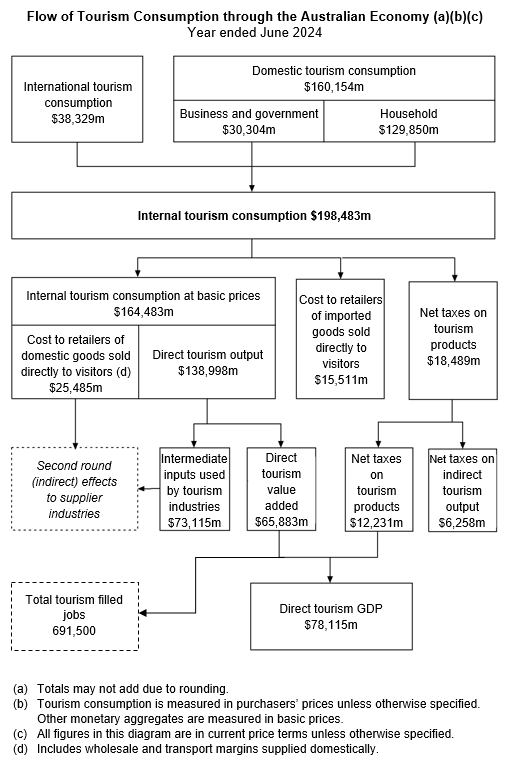Change in gross value added by tourism industry, 2022-23 to 2023-24, current prices
[["Education and training","Ownership of dwellings(a)","Air, water and other passenger transport","Cafes, restaurants and takeaway food services","Travel agency and information centre services","Other retail trade","Accommodation","All other industries","Clubs, pubs, taverns and bars","Taxi transport","Transport equipment rental","Other road passenger transport","Sports and recreation services","Rail passenger transport","Cultural services","Casinos and other gambling services","Automotive fuel retailing"],[[1.452],[1.222],[0.69299999999999995],[0.58499999999999996],[0.56000000000000005],[0.46000000000000002],[0.41199999999999998],[0.23799999999999999],[0.217],[0.13100000000000001],[0.114],[0.111],[0.084000000000000005],[0.067000000000000004],[0.051999999999999998],[0.039],[-0.029000000000000001]]]
[]
[{"value":"0","axis_id":"0","axis_title":"","axis_units":"","tooltip_units":"","table_units":"","axis_min":null,"axis_max":null,"tick_interval":null,"precision":"-1","data_unit_prefix":"","data_unit_suffix":"","reverse_axis":false}][{"value":"0","axis_id":"0","axis_title":"$b","axis_units":"","tooltip_units":"($b)","table_units":"($b)","axis_min":"-0.1","axis_max":"1.5","tick_interval":"0.5","precision":"-1","data_unit_prefix":"","data_unit_suffix":"","reverse_axis":false}]